
Toronto Metropolitan University Library has partnered with the Aga Khan Museum in a creative collaboration that harnesses digital technology to create innovative experiences for the Museum’s exciting new Remastered exhibition.
The Aga Khan Museum recently launched it’s vibrant Remastered exhibition—November 7 to March 21, 2021—showcasing 11 classic Islamic manuscript paintings complemented by 40 digital interventions.
The digital interventions are the work of Library Collaboratory team members, Lead Developer Michael Carter-Arlt, Web Developer and Support Technician Jae Duk Seo, with Information Technology Services Head Fangmin Wang and Web Services Librarian Sally Wilson acting as administrative consultants on the project.
In collaboration with the Museum and exhibition curator Dr. Michael Chagnon, the Library team developed new ways to experience the historic manuscripts, introducing alternative learning opportunities through the exploration of digital technologies.
“The Remastered exhibition has given us the valuable opportunity to reimagine how we interpret classic Islamic artworks using modern technology available at the Ryerson Library,” says Carter-Arlt. “The intention of this project is to tell a story for each artwork, and in doing so provide a greater understanding through interactive digital media.”
…..
The Library’s partnership with the Aga Khan Museum began in 2019 when the Museum approached the Library about creating unique learning experiences using Virtual Reality (VR), Augmented Reality (AR) and Mixed Reality (MR) technologies.
Following initial meetings, the Library and Museum worked together on an exploratory research project, funded by the Canada Council for the Arts, which sought to develop and assess digital and experiential learning resources that would help to increase classroom engagement, and expand access to collections beyond in-person visits to the Museum.
The Aga Khan Museum supplied the Library with high resolution photographs and descriptions of three objects from their collection, including: an astrolabe (astronomical instrument), an illuminated and illustrated leaf from a manuscript, and a green ceramic bottle.
The Library team then used digital and emerging technologies to create new experiences that could be tested for their engagement and educational value.
In total, four experiences for the three objects were developed. They included: an AR animation with translations and audio for the leaf of the manuscript; AR and Looking Glass (holographic) experiences for the green ceramic bottle; and an acrylic replica astrolabe, which could be taken apart and rebuilt.
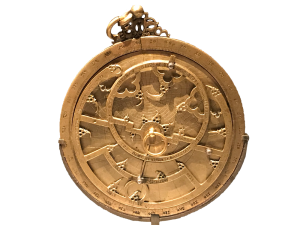
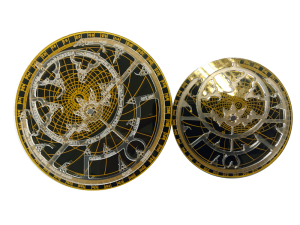
Library team members, Sally Wilson, E-learning and Accessibility Services Librarian Kelly Dermody, and Operations Specialist Cristina Pietropaolo then conducted focus groups to further understand the engagement impacts and potential of the digital resources for in-class learning, as well as increased access to museum collections.
“The purpose of this project was to translate select items of the Museum’s collection from their physical confines to digital formats using Augmented Reality (AR) and other technologies,” says Pietropaolo. “The long-term intention of this work is to facilitate accessible and meaningful education around these objects for both educators and their students in the classroom, as well as for members of the public in an effort to transform and enhance access to arts and culture education.”
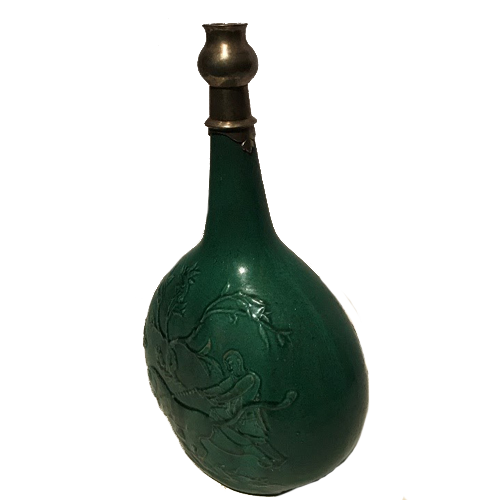
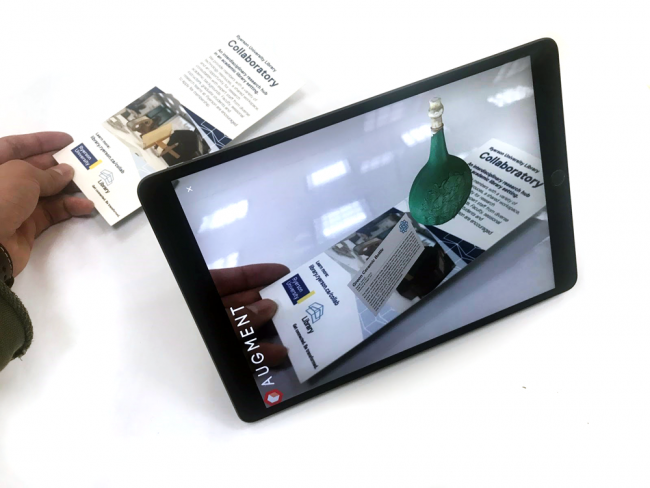
The work which began in 2019 is ongoing as Library team members continue to investigate opportunities for digital and experiential learning in the context of gallery, library, archives and museum education.
……
In April 2020, the Aga Khan Museum once again approached the Library to collaborate on the Remastered exhibit, curated by Dr. Michael Chagnon.
The task: to develop digital experiences to accompany ancient Islamic manuscripts for the exhibit. To complete the project, the Library was given exclusive access to high resolution folios in order to rework and reimagine them in digital formats. The result was 40 new experiences including: seven animations, five 3D holograms, five digital restorations, and 23 interactive folios. The Library and Museum also received a generous loan from Looking Glass Factory to assist in the display of the holographic images.
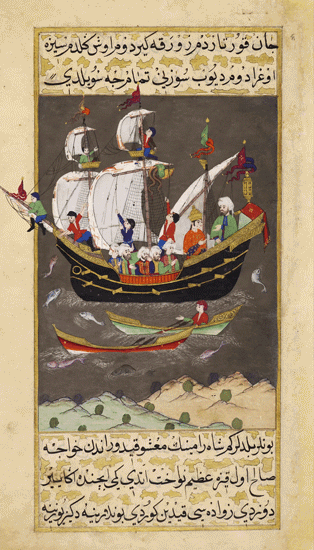
The digital elements, now part of the Remastered exhibit, enhance the overall learning and storytelling experience for visitors through digital restoration, innovative engagement elements and new digitally enhanced explorations.
“We are very excited to partner with the Aga Khan Museum. It has been a wonderful opportunity to bring the Library’s role in interdisciplinary research, knowledge sharing and digital information tools to this unique learning environment,” says Chief Librarian Carol Shepstone. “This project is an excellent example of how the GLAM sectors (galleries, libraries, archives and museums) can come together to leverage unique expertise and shared goals.”